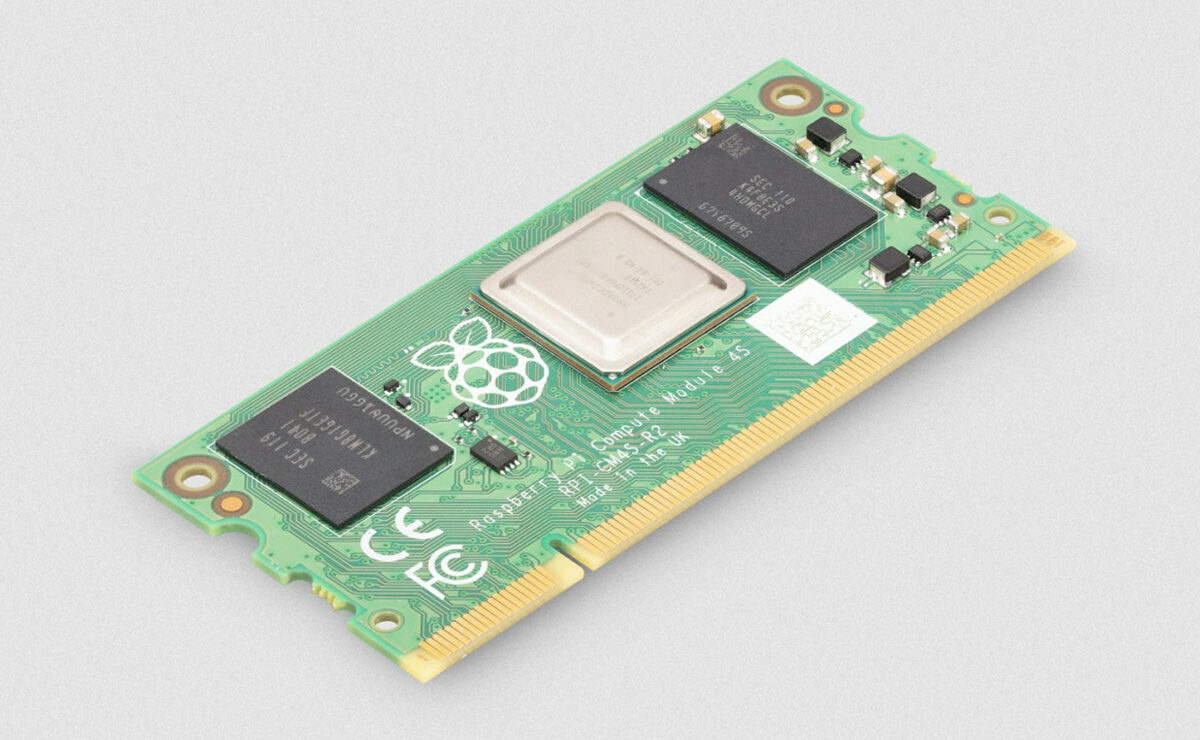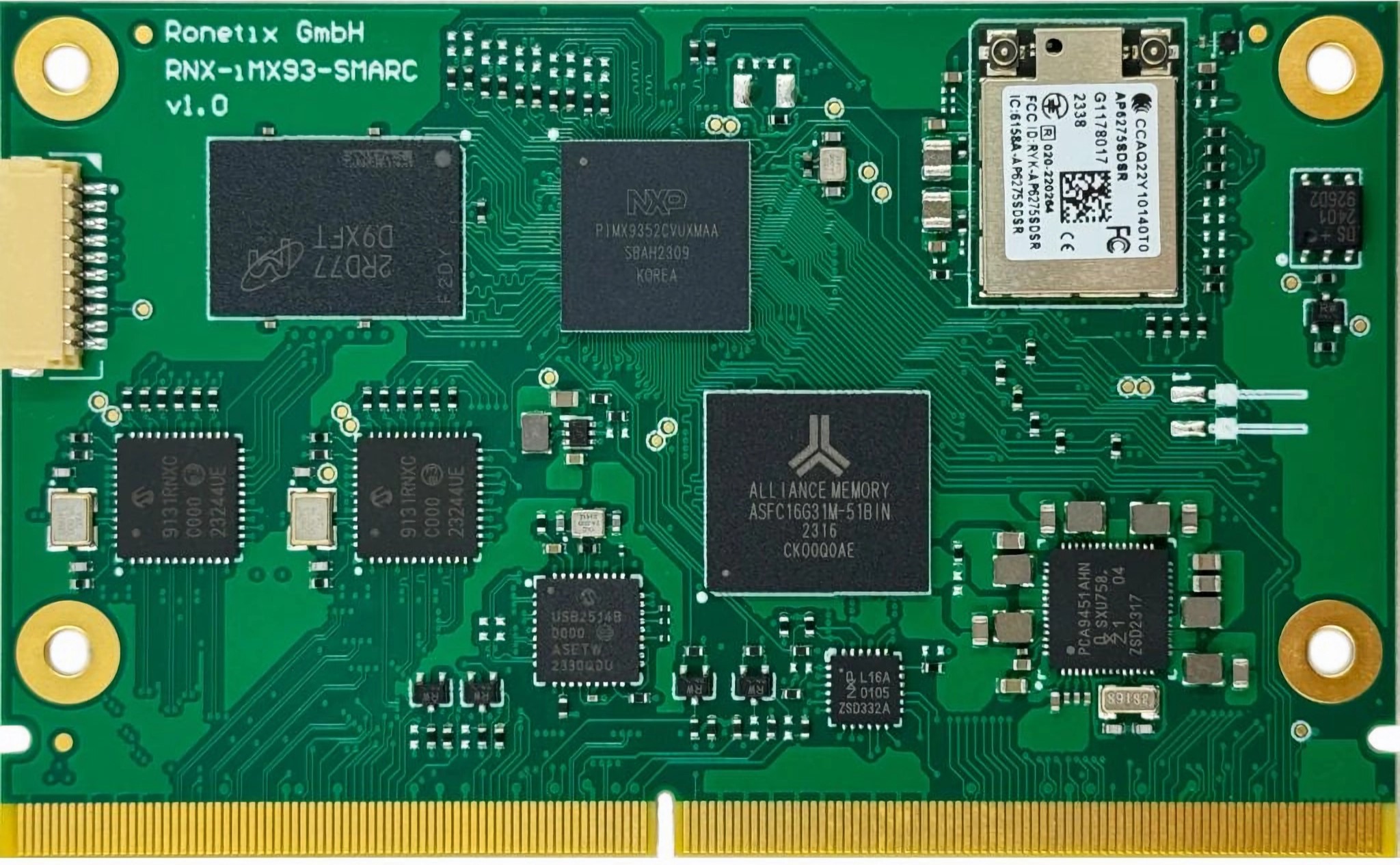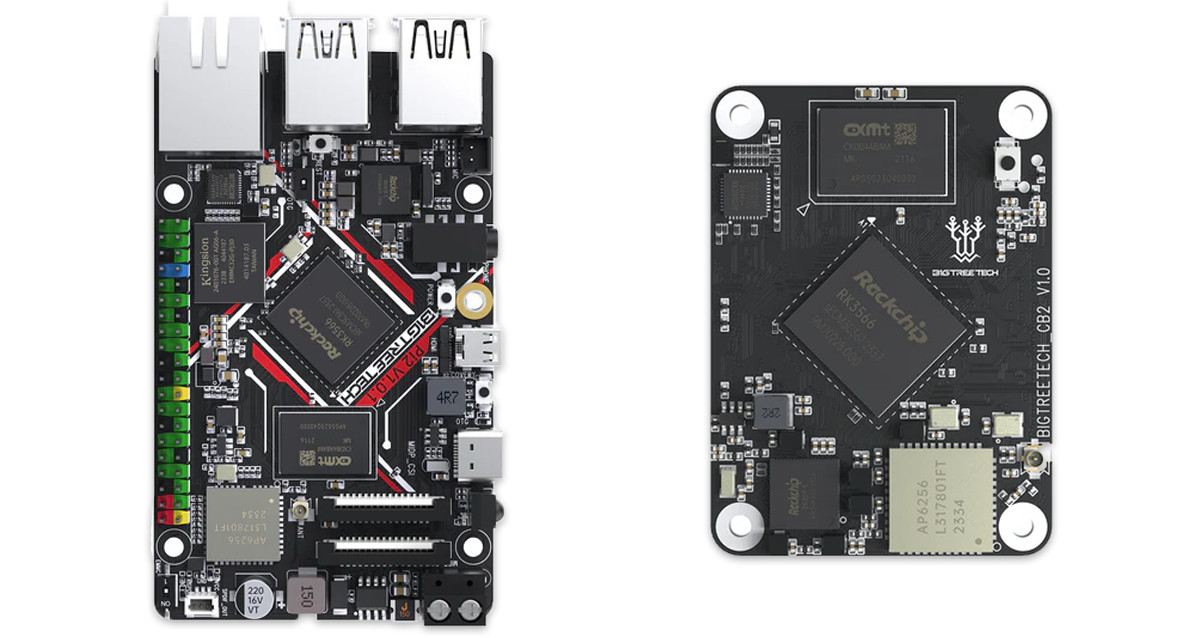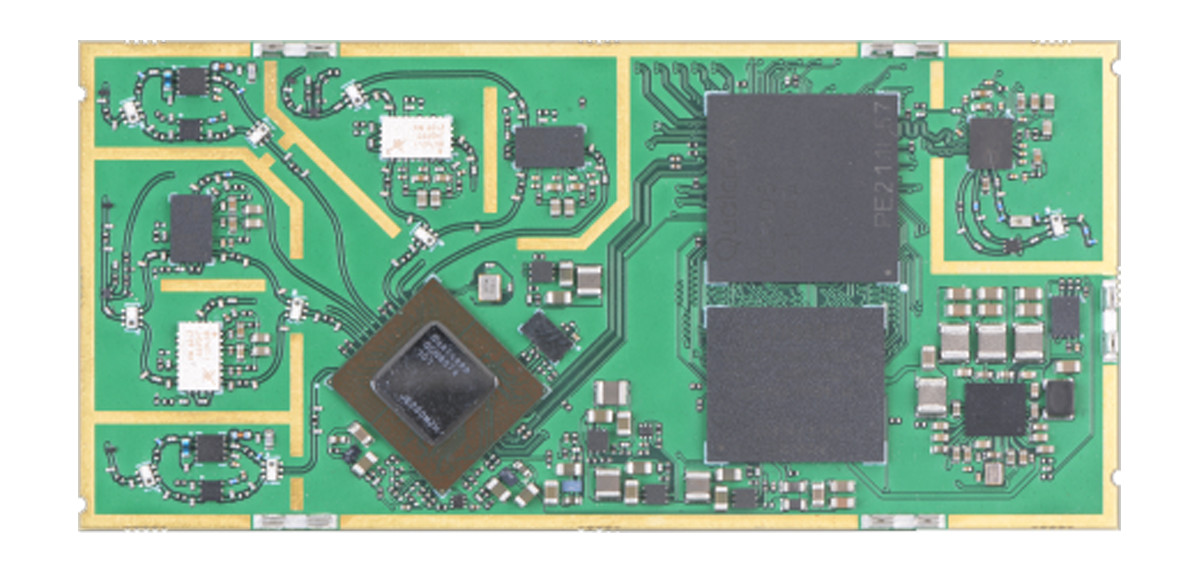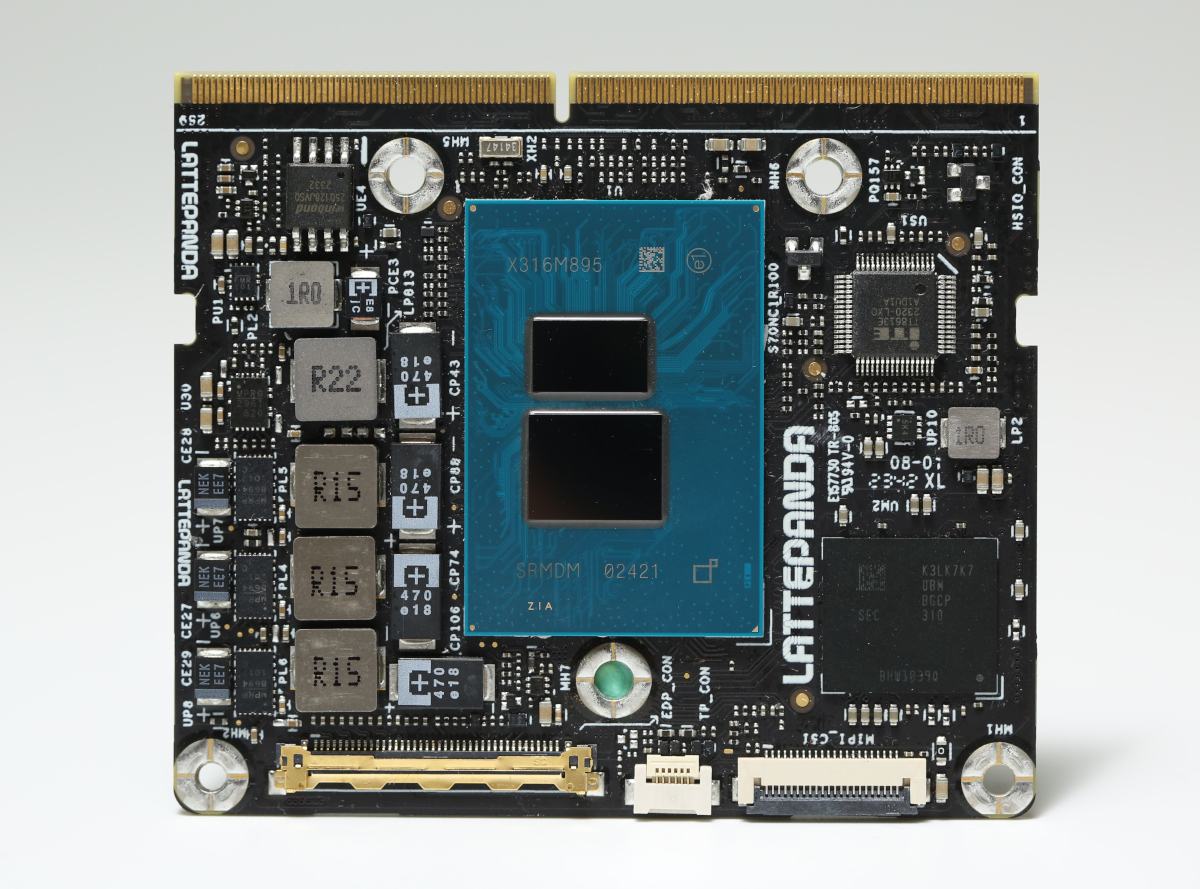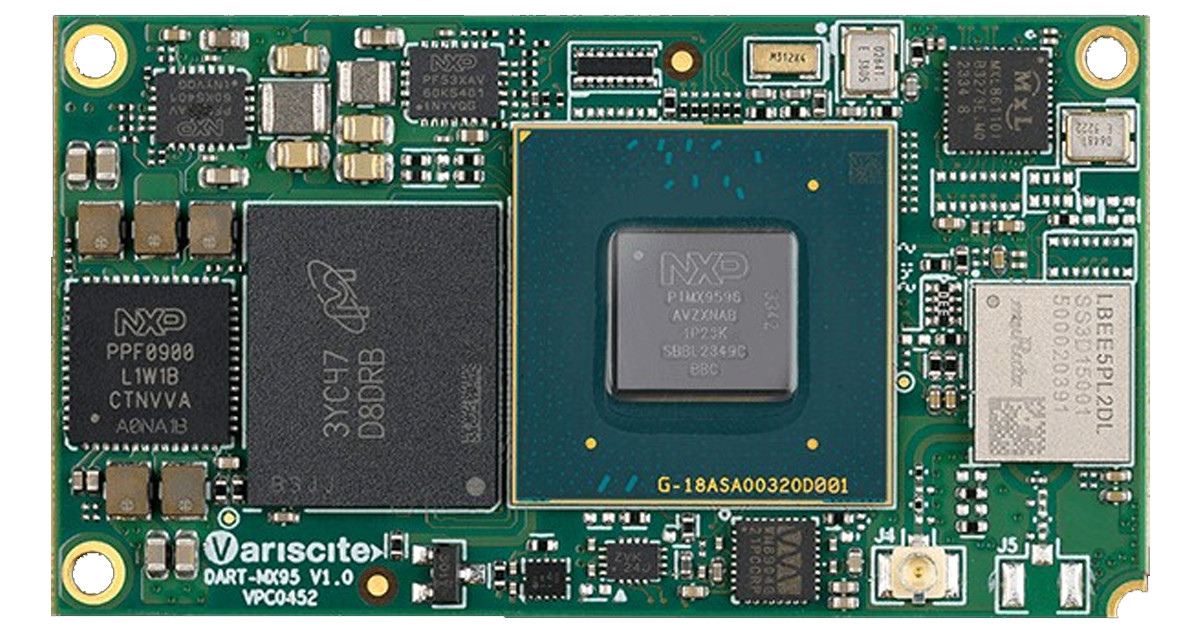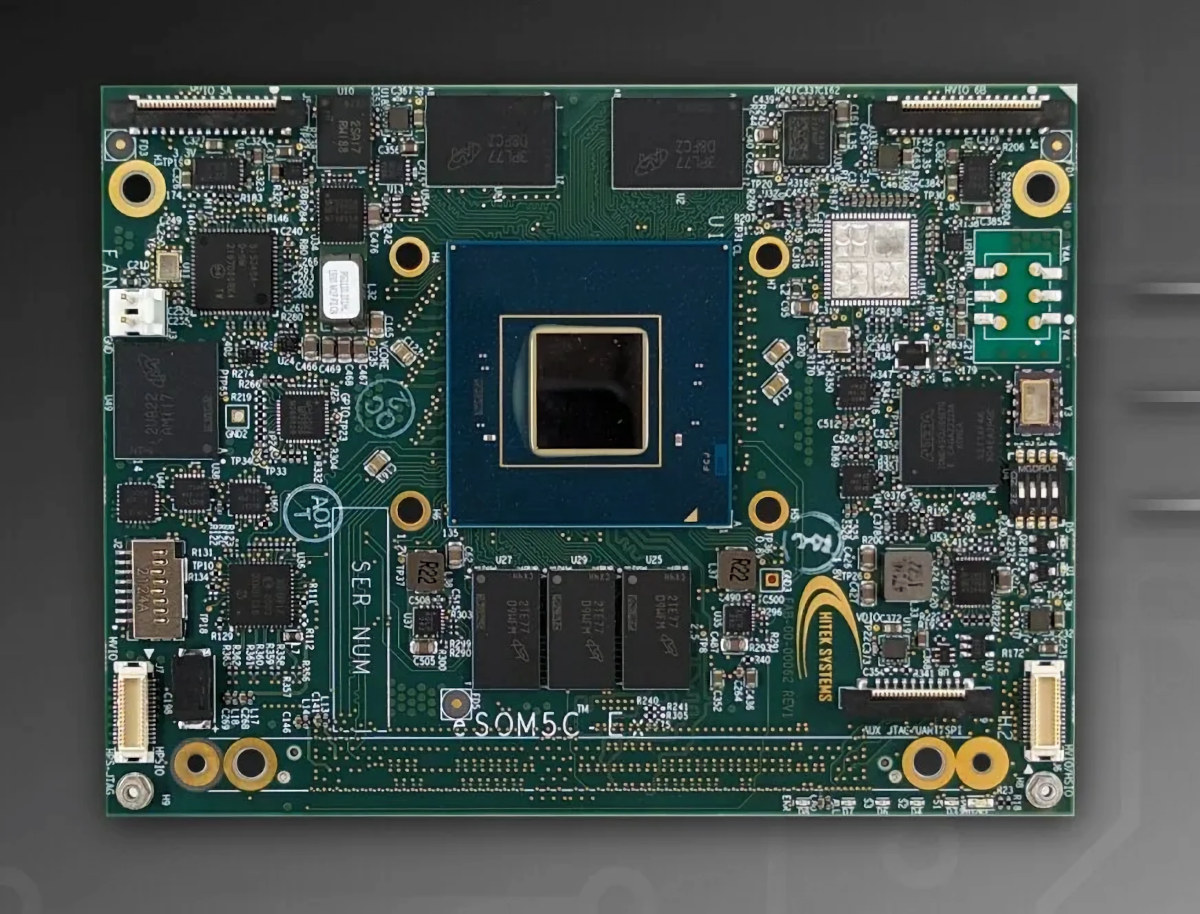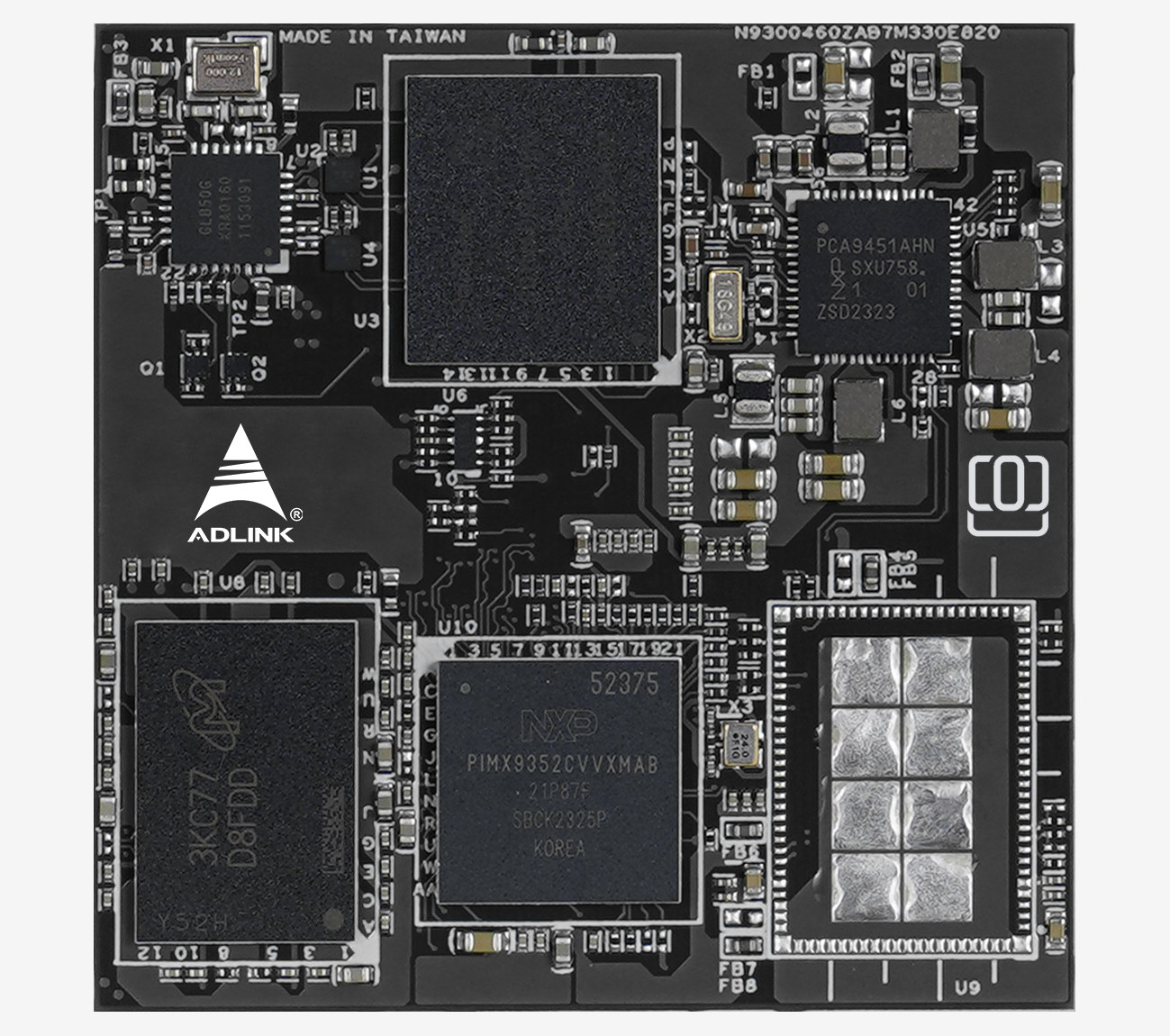Raspberry Pi has announced three new versions of its Compute Module 4S (CM4S) offering 2GB, 4GB, and 8GB RAM options which is an upgrade from the 1GB variant introduced in 2022. These new modules feature the same Broadcom BCM2711 quad-core Cortex-A72 SoC used in Raspberry Pi 4 and Raspberry Pi CM4 and have a starting price of only $25. The main downside is that the modules can only be purchased in bulk (200-unit boxes) through Raspberry Pi Approved Resellers. Raspberry Pi Compute Module 4S (CM4S) specifications: SoC – Broadcom BCM2711 CPU – Quad-core 64-bit Cortex-A72 processor @ 1.5 GHz GPU – VideoCore VI GPU 3D Graphics: OpenGL ES 3.0 and Vulkan 1.1 Video H.265 (HEVC) (up to 4Kp60 decode) H.264 (up to 1080p60 decode, 1080p30 encode) Memory – 1GB, 2GB, 4GB, and 8GB LPDDR4-3200 SDRAM with ECC Storage – 8GB, 16GB, or 32GB eMMC flash; Option for 0GB eMMC Flash […]
Ronetix launches NXP i.MX93 SoMs in SMARC and OSM-L form factors
Austrian embedded equipment manufacturer, Ronetix, has released two i.MX93 system-on-modules (SoMs): the RNX-iMX93-OSM that follows the Open Standard Module (OSM) form factor, and the RNX-iMX93-SMARC compliant with the SMARC 2.1 (smart mobility architecture) standard. Ronetix i.MX93 SoMs are powered by the NXP i.MX93 processor featuring a 64-bit dual-core Arm Cortex-A55 application processor running at 1.7GHz and a Cortex-M33 core running at 250MHz for low-latency and real-time tasks. The SoC supports up to 2GB LPDDR4 RAM and 512GB eMMC storage, and the integrated Arm Ethos-U65 microNPU offers up to 0.5 TOPS of computing power for machine vision applications and intelligent energy management (IEM). Applicable for industrial automation and IoT, the SoMs also feature two CAN and Ethernet interfaces to aid high-speed data transfer. Other hardware featuring the i.MX93 that we have covered recently include the ADLINK OSM-IMX93, MaaXBoard OSM93, and Ka-Ro Electronics’ QS93. The RNX-iMX93-SMARC system-on-module comes in 82 x 50mm […]
BIGTREETECH Pi 2 SBC and CB2 module for 3D printers now feature Rockchip RK3566 SoC with Gigabit Ethernet
BIGTREETECH recently announced the release of the BIGTREETECH Pi 2 SBC and BIGTREETECH CB2 SoM, both powered by the Rockchip RK3566 SoC. These new modules are direct upgrades from the BIGTREETECH Pi v1.2 and BIGTREETECH CB1, which we covered and reviewed in our previous posts. Specially designed for 3D printers, these new modules have a similar form factor to that of a Raspberry Pi and the RPI CM4 module, and come with a set of upgraded features including support for GbE Ethernet, dual-band WiFi, up to 32GB of LPDDR4 RAM, eMMC storage, HDMI, USB, and more. BIGTREETECH Pi 2 Specifications SoC – Rockchip RK3566 CPU – Quad-core Arm Cortex-A55 processor @ 1.8 GHz GPU – Arm Mali G52-2EE GPU with support for OpenGL ES 1.1/2.0/3.2, Vulkan 1.1, OpenCL 2.0 NPU – 0.8 TOPS AI accelerator VPU – 4Kp60 H.265/H.264/VP9 video decoding, 1080p100f H.265/H.264 video encoding System Memory – 2GB LPDDR4 (Customizable – 1GB/2GB/4GB/8GB) […]
8devices TobuFi SoM is designed for drones, robotics, and advanced audio systems
8devices has recently introduced TobuFi, a Qualcomm QCS405-powered System-on-Module (SoM) featuring dual-band Wi-Fi 6 and Wi-Fi 5 capabilities. The device also features 1GB LPDDR3, 8GB of eMMC storage, and multiple display resolutions. It also offers various interfaces, including USB 3.0, HDMI, I2S, DMIC, SDC, UART, SPI, I2C, and GPIO. In previous posts, we covered 8devices product launches like the Noni M.2 WiFi 7 module, Rambutan and Rambutan-I modules, Habanero IPQ4019 SoM, Mango-DVK OpenWrt Devkit, and many more innovative products. If you’re interested in 8devices, feel free to check those out for more details. 8devices TobuFi SoM specifications: SoC – Qualcomm QCS405 CPU – Quad-core Arm Cortex-A53 at 1.4GHz; 64-bit GPU – Qualcomm Adreno 306 GPU at 600MHz; supports 64-bit addressing DSP – Qualcomm Hexagon QDSP6 v66 with Low Power Island and Voice accelerators Memory – 1GB LPDDR3 + 8GB eMMC Storage 8GB eMMC flash SD card – One 8-bit (SDC1, 1.8V) and one […]
LattePanda Mu is an x86 Compute Module based on Intel Processor N100 CPU
The LattePanda Mu is a compute module/system-on-module based on the popular Intel Processor N100 quad-core Alder Lake-N processor that can run Windows or Linux and aims to provide a more powerful solution than the Raspberry Pi 5 and upcoming Raspberry Pi CM5 (Compute Module 5). The LattePanda Mu does not follow any SoM standard and instead comes in a custom 69.6 x 60mm form factor using a 260-pin SO-DIMM edge connector. The module is equipped with 8GB RAM and 64GB eMMC flash by default, and the interfaces exposed through the edge connector (PCIe, USB, Ethernet, HDMI…) make it suitable for a range of applications such as IoT, robotics, digital signage, and edge computing through custom carrier boards. LattePanda Mu specifications: SoC – Intel Processor N100 quad-core Alder Lake-N processor @ up to 3.4 GHz (Turbo) with 6MB cache, 24EU Intel HD graphics @ 750 MHz; TDP: 6W System Memory – […]
Variscite DART-MX95 SoM – Edge Computing with dual GbE, 10GbE, Wi-Fi 6, and AI/ML capabilities
Introduced at Embedded World 2024, the Variscite DART-MX95 SoM is powered by NXP’s i.MX 95 SoC and features an array of high-speed peripherals including dual GbE, 10GbE, and dual PCIe interfaces. Additionally, this SoM supports up to 16GB LPDDR5 RAM and up to 128GB of eMMC storage. It features a MIPI-DSI display interface, multiple audio interfaces, MIPI CSI2 for camera connectivity, USB ports, and a wide range of other functionalities, making it highly versatile for a variety of applications. Previously, we have covered many different SoMs designed by Variscite, including the Variscite VAR-SOM-6UL, Variscite DART-MX8M, and Variscite DART-6UL SoM, among others. Feel free to check those out if you are looking for products with NXP SoCs. Variscite DART-MX95 SoM Specifications SoC – NXP i.MX 95 CPU Up to 6x 2.0GHz Arm Cortex-A55 cores Real-time co-processors – 800MHz Cortex-M7 and 250MHz Cortex-M33. 2D/3D Graphics Acceleration 3D GPU with OpenGL ES 3.2, […]
Intel Agilex 5 SoC FPGA embedded SoM targets 5G equipment, 100GbE networking, Edge AI/ML applications
Hitek Systems eSOM5C-Ex is a compact embedded System-on-Module (SOM) based on the mid-range Intel Agilex 5 SoC FPGA E-Series and a pin-to-pin compatible with the company’s earlier eSOM7C-xF based on the Agilex 7 FPGA F-Series. The module exposes all I/Os, including up to 24 transceivers, through the same 400-pin high-density connector found in the Agilex 7 FPGA-powered eSOM7-xF and the upcoming Agilex 5 FPGA D-Series SOM that will allow flexibility from 100K to 2.7 million logic elements (LEs) for the whole product range. Hitek eSOM5C-Ex specifications: SoC FPGA – Intel Agilex 5 E-series group A and Group B FPGAs in B32 package Supported variants: A5E065A/B, A5E043A/B and A5E043A/B Hard Processing System (HPS) – Dual-core Cortex-A76 and dual-core Cortex-A55 FPGA Up to 656,080 Logic elements 24 x transceivers up to 28Gbps System Memory Up to 2x 8GB LPDDR4 for FPGA 2 or 4GB DDR4 for HPS Storage – 32GB eMMC flash, […]
ADLINK OSM-IMX93 is an OSM Size-L module based on NXP i.MX 93 SoC
ADLINK OSM-IMX93 is an OSM r1.1 Size-L module based on NXP i.MX 93 Arm Cortex-A55 & Cortex-M33 AI processor, and the first from the company to comply with the Open Standard Module (OSM) standard. The 45x45mm module is fitted with up to 2GB LPDDR4L, 128GB eMMC flash, an optional WiFi/Bluetooth module, and its 662 contacts provide a range of interfaces that include LVDS and DSI graphics output, 2x GbE (including 1x TSN capable), 2x CAN bus, I2S audio codec interface, USB2 interfaces, and more. ADLINK OSM-IMX93 specifications: SoC – NXP i.MX 93 CPU 2x Arm Cortex-A55 up to 1.7 GHz 2x Arm Cortex-M33 up to 250 MHz GPU – PXP 2D GPU with blending/composition, resize, color space conversion NPU – Arm Ethos-U65 NPU @ 1 GHz up to 0.5 TOPS Memory – 640 KB OCRAM w/ ECC Security – EdgeLock Secure Enclave System Memory – 1 or 2GB LPDDR4L Storage […]


